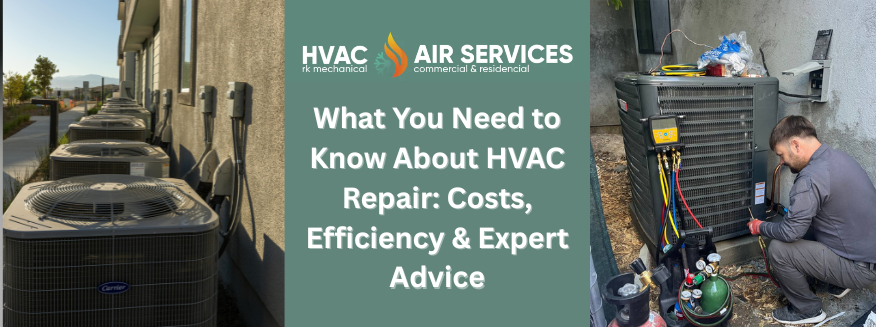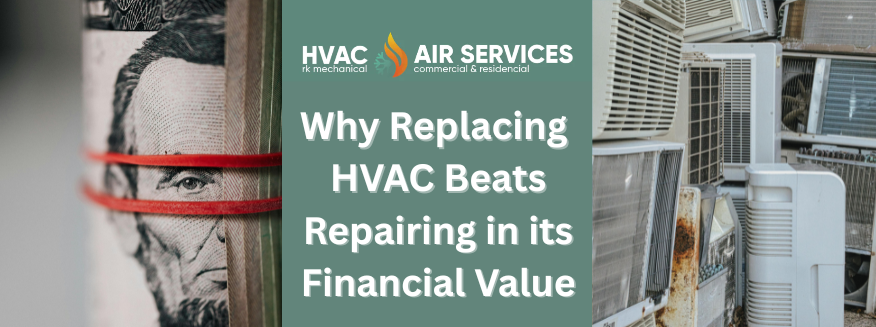The upcoming 2025 HVAC refrigerant change is poised to transform the HVAC industry, impacting equipment, installation processes, and maintenance. For homeowners, understanding this shift is critical to maintaining a comfortable, efficient home. This guide will walk you through everything you need to know about the 2025 HVAC refrigerant transition, ensuring you’re prepared for what’s ahead.
Listen To This Podcast On The Same Topic:
Understanding 2025 HAVC Refrigerants Change and Their Role in HVAC Systems
Refrigerants are the lifeblood of your HVAC system, responsible for absorbing and releasing heat to regulate indoor temperatures. Commonly used refrigerants include R-22 (Freon) and R-410A, but these are being phased out due to their environmental impact. The focus is now on low-GWP (Global Warming Potential) refrigerants, which significantly reduce greenhouse gas emissions.
Why Are Refrigerants Changing?
The shift aligns with global climate initiatives, such as the American Innovation and Manufacturing (AIM) Act, aimed at reducing greenhouse gas emissions. Refrigerants like R-22 and R-410A have high GWPs, contributing to global warming. Low-GWP alternatives like R-454B and R-32 are environmentally friendly, marking a significant step toward sustainable cooling and heating solutions.
The California Freon Ban: Key Details
Starting January 1, 2025, California will ban the sale of refrigerants with a GWP above 750, including R-410A. This regulation is part of the state’s ambitious climate goals and will extend to other high-GWP refrigerants by 2030. The change applies to new HVAC equipment but allows for the continued use of existing systems.
How the 2025 HVAC Refrigerant Change Affects Homeowners
1. New Equipment Requirements
Post-2025, all new HVAC systems must use approved low-GWP refrigerants like R-454B or R-32. These refrigerants require redesigned equipment, ensuring compatibility with their properties and safety standards. Homeowners planning to replace their HVAC systems should consider these new models for compliance and efficiency.
2. Impact on Existing Systems
Existing systems using R-410A can still be maintained, but with limitations:
- Availability of R-410A: Supplies will dwindle over time, potentially driving up costs.
- Reclaimed Refrigerants: Repairs may rely on recycled or reclaimed R-410A, which may be less accessible and more expensive.
3. Increased Costs
The transition may lead to increased maintenance and repair costs due to the scarcity of R-410A and the technical requirements of the new refrigerants.
Preparing Your System for the 2025 HVAC Refrigerant Change
Step 1: Assess Your Current System
A professional HVAC assessment can determine whether your current system is compatible with low-GWP refrigerants or if an upgrade is necessary. Look for signs of inefficiency, such as frequent repairs, high energy bills, or inconsistent cooling and heating.
Step 2: Upgrade to a Future-Ready System
Replacing your system before the refrigerant change has several advantages:
- Cost Savings: Avoid the anticipated price surge in refrigerants and equipment.
- Energy Efficiency: Modern systems using low-GWP refrigerants are more energy-efficient, reducing utility bills.
- Environmental Benefits: Contribute to lowering greenhouse gas emissions.
Step 3: Partner with Certified HVAC Professionals
Ensure your contractor is certified and trained in handling low-GWP refrigerants. They will guide you through the transition, from equipment selection to installation and maintenance.
What to Expect from New HVAC Installations
New HVAC systems are designed to accommodate low-GWP refrigerants, requiring changes in system design and safety measures. Here’s what homeowners can expect:
- Updated Equipment Design: Systems optimized for R-454B or R-32.
- Enhanced Safety Standards: Low-GWP refrigerants may require new protocols to ensure safe handling and operation.
- Higher Initial Costs: While new systems may have a higher upfront cost, they offer long-term savings through improved efficiency and reduced energy consumption.
Maintaining Older Systems with R-410A
1. Repairs and Maintenance
If your current system uses R-410A, you can continue using it, but repairs may depend on the availability of reclaimed refrigerants. Stocking up on R-410A or considering a system conversion to a compatible refrigerant can help mitigate future challenges.
2. Technician Training
Ensure that technicians servicing your system are trained in handling both traditional and new refrigerants. This minimizes the risk of improper repairs or conversions.
Benefits of Transitioning to Low-GWP Refrigerants
Switching to low-GWP refrigerants offers several advantages for homeowners:
- Eco-Friendly Operations: Reduce your home’s carbon footprint with environmentally conscious refrigerants.
- Improved Efficiency: Low-GWP systems are designed to optimize performance, leading to better temperature control and energy savings.
- Future Compliance: Avoid the hassle of regulatory non-compliance by transitioning early.
FAQs About the 2025 HVAC Refrigerant Change
1. Do I need to replace my HVAC system before 2025?
Not necessarily. However, upgrading early ensures compliance, avoids rising costs, and provides access to more efficient systems.
2. What refrigerants will replace R-410A?
Low-GWP refrigerants like R-454B and R-32 are the primary replacements for R-410A.
3. Will repairs for R-410A systems still be possible?
Yes, but they will rely on reclaimed R-410A, which may become scarce and expensive over time.
4. Are low-GWP refrigerants safe?
Yes, when handled correctly by certified technicians. New safety measures ensure secure installations and maintenance.
5. How much does upgrading to a low-GWP system cost?
Costs vary based on the system type and size, but the investment pays off in energy savings and long-term compliance.
6. What happens if I delay upgrading my system?
Delaying could result in higher costs for refrigerants and repairs, limited equipment options, and regulatory challenges.
Conclusion
The 2025 HVAC refrigerant change is a necessary step toward reducing the environmental impact of HVAC systems. Homeowners must prepare by assessing their current systems, upgrading to low-GWP refrigerants, and working with certified HVAC professionals. By acting now, you can ensure a seamless transition while reaping the benefits of a more efficient and eco-friendly system.
At RK Mechanical Air Services, we’re dedicated to helping homeowners navigate these changes. Contact us today for a consultation and let us help you prepare your home for the future of HVAC technology.





































